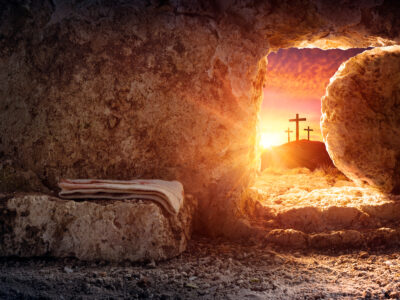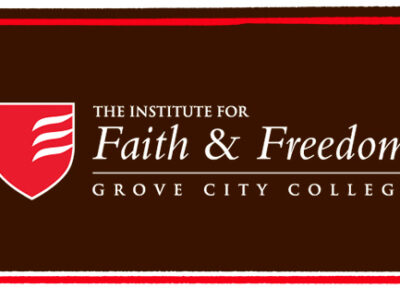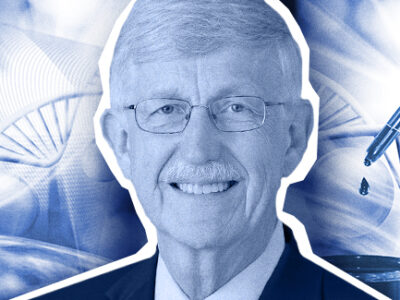A few weeks ago I wrote an article describing Ronald Reagan’s views on Jesus Christ and the crucifixion. While most of the response was positive, I did receive some negative email. One writer complained that I rekindled the same “divisive” issues that split many Jews and Christians over Mel Gibson’s film. And yet, insisted my emailer, “Reagan was very tolerant of Jews. Why don’t you focus on that?”
Point taken. And indeed, with Easter approaching, Reagan’s mutual embrace of both the Christian holy day and Jewish people serves as a helpful example of Jewish-Christian unity.
Ronald Reagan always loved Easter. On Easter Sunday 1926, the 15-year old kicked off the Annual Sunrise Prayer Meeting at 7:00 AM at the First Christian Church in little Dixon, Illinois. His saintly mother taught him that Easter Sunday was a joyous occasion—a time to replace the pain of the crucifixion. As president, he called Easter “Christ’s victory over death.” “We will remember,” heralded Reagan in April 1981, “that He gave His body and His blood-washing clean the faults and the shortcomings of the world. In our rejoicing we renew the hope that is ours through the risen Lord.”
Notably, in his first official presidential statement on Easter, Reagan devoted equal time to Easter and to Passover-exactly four sentences on each.
Reagan learned to respect the Jewish faith at the Dixon church and at home. On November 11, 1928, his church’s mission committee—chaired by his mother—brought in a Russian Jew named B. E. Kertchman, who provided an eye-opening modern history of Jews and their experiences. Reagan’s hatred of prejudice was also derived from his faith. “The commandment given us is clear and simple,” he said. “‘Thou shalt love thy neighbor as thyself.’” In the Evil Empire speech, he said that bigotry was a “sin” and “evil” which Christians had a responsibility to oppose “with all our might.”
His close friend Bill Clark, a devout Catholic, is quick to underscore this aspect of Reagan’s faith: “He was very tolerant of other faiths, especially the Jewish faith.” In July 2003 I spoke to Clark inside the chapel he built in Paso Robles, California. As we walked to my car, Clark pressed: “Remember: Ronald Reagan was especially tolerant of the Jewish faith. You remind people of that!”
It was in his crusade against communism that Reagan’s concern for Jews was particularly evident. He noted that Jews suffered cruel persecution under communism, from Nicaragua to the Soviet Union. He carried in his jacket a list of Soviet Jews held in prison camps or denied the right to emigrate. Each time he met with a Soviet representative, he pulled out the list. One-by-one, those captives were released.
Reagan lobbied Soviet leader Mikhail Gorbachev to ease up on Jewish emigration. His pressure was so intense that it annoyed Gorbachev. In one instance, a testy Gorbachev lamely countered that Reagan had no right to lecture while America busily searched its southern border for illegal Mexican immigrants. Reagan gently pointed out the absurdity of the analogy.
A dramatic example of Soviet persecution of Jews was Anatoly Sharansky. In 1977, Sharansky was abducted by the KGB outside his apartment on Gorky Street and charged with espionage and treason—crimes punishable by death. He spent nine years in Lefortovo Prison, where he symbolized Reagan’s description of the “religious dissident trapped in that cold, cruel existence.” Sharansky later said of his interrogators: “They wanted to use me to destroy Jews who hoped to leave for Israel.”
In prison, Sharansky befriended Volodia Poresh—a Christian. The two secretly started each day with a Bible study, reading both the Old and New Testaments. They called these sessions “Reaganite readings.” Reagan had declared a “Year of the Bible,” a designation dismissed as childish by the Kremlin and some Western elites. Sharansky and Poresh—Jew and Christian brothers—quite disagreed: they gained strength from that Bible in coping with the “evil” (Sharansky’s word) they faced.
Eventually, Sharansky was freed. In January 1989 he met President Reagan, who awarded him the Congressional Gold Medal. Sharansky told Reagan that if he ever had any “sad moments” once he left the presidency, he should think about Sharansky’s “happy family” and the thousands praying in Soviet camps. He thanked Reagan for Soviet citizens who were “free today not because of some good will of Soviet leaders but because of their struggle and your struggle.”
Today, Sharansky, who goes by the first name Natan, is a prominent player in Israeli politics and a leader among Russian Jews seeking their Biblical homeland.
Ronald Reagan’s respect for Jews was ingrained in his upbringing and his faith. He drew upon Christian motivations in interceding to help Jews whenever he could. Anyone who thinks that a Christian who rejoices over Easter cannot reach out to Jews ought to contemplate Reagan’s example. Jesus Christ said that He came for all people—Jew and Gentile alike; it was a message Ronald Reagan took to heart.





Pingback: Homepage